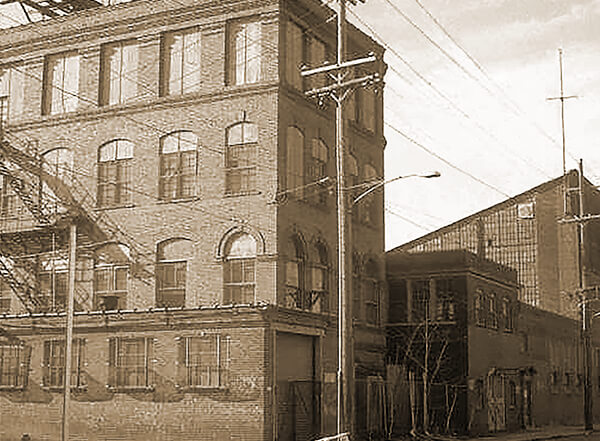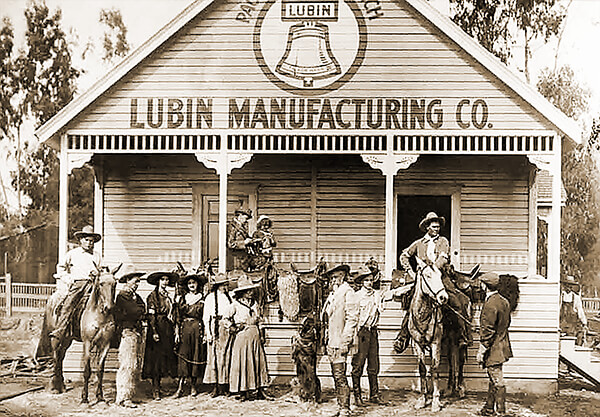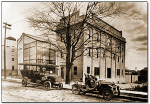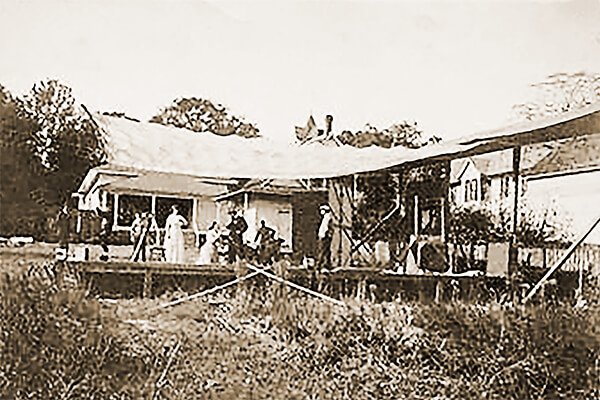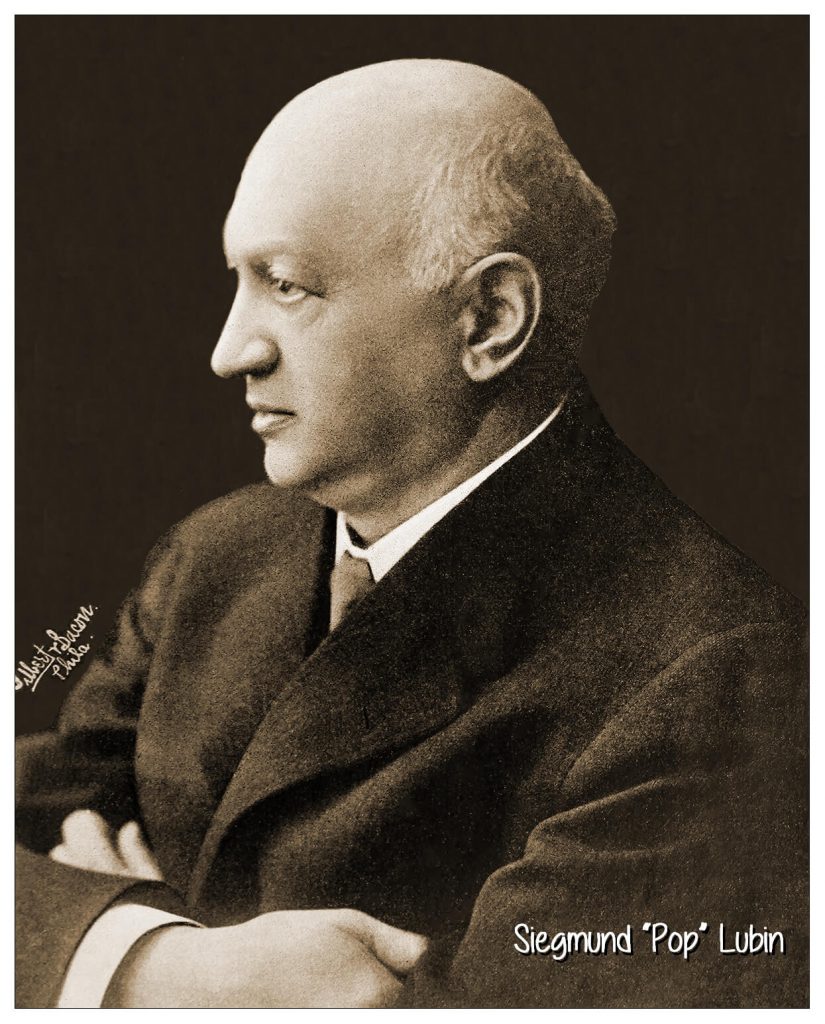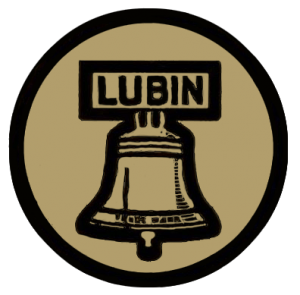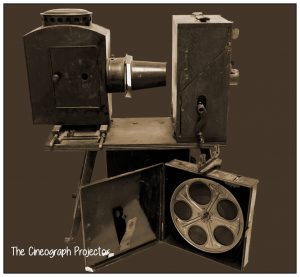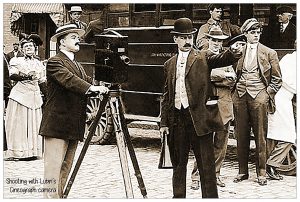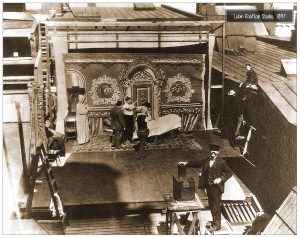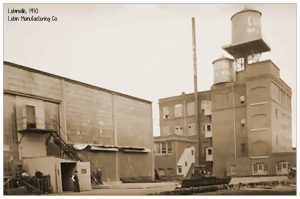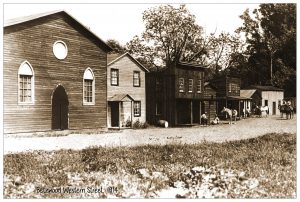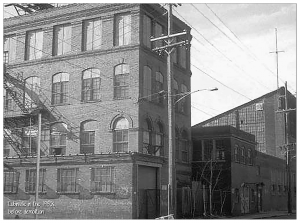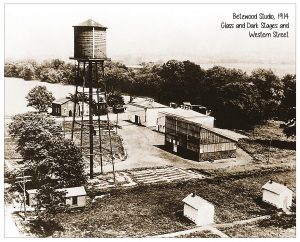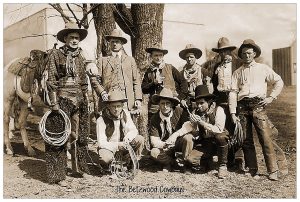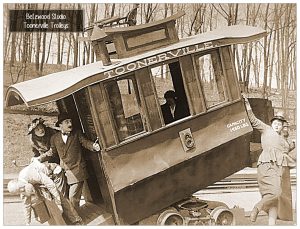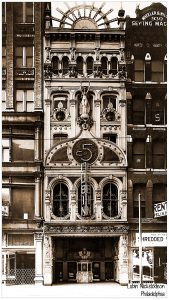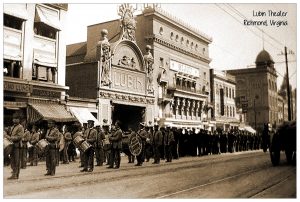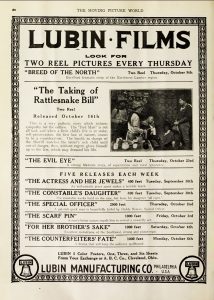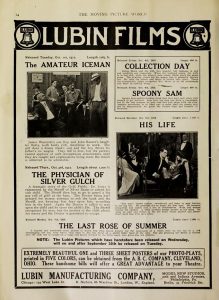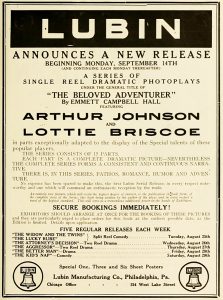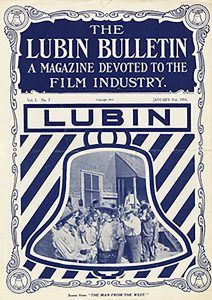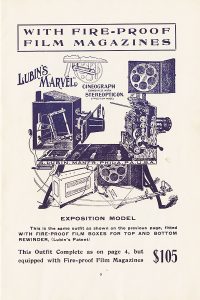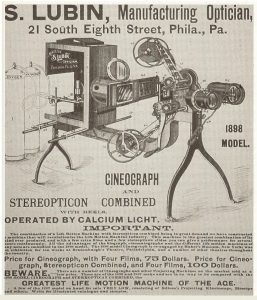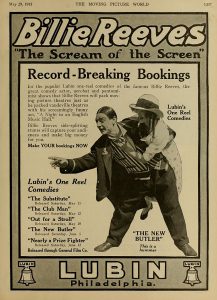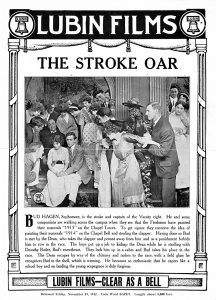The "King of the Movies"
Siegmund "Pop" Lubin
Sigmund Lubin
(click to enlarge)
Related Pages:
- Lubin Mfg. Co. main page
- Lubin's Pennsylvania studios
- Lubin's California Studios
- The Moguls main page

Siegmund Lubin didn't start out to be one of the most powerful movie makers in the country. He just ended up that way.
"Pop" Lubin was an immigrant, like many of the early movie makers. He was born Zygmunt Lubszyński April 20, 1851 in what is now Warsaw, Poland and emigrated to the U.S in 1876. In 1881 changed his name to Lubin. He stood 6'3 ", an imposing figure.
Inventor and Entrepreneur
Siegmund Lubin was an optometrist. And photography enthusiast. His desire was always to become rich and famous and he was always looking for an opportunity.
He became fascinated with movie equipment after seeing one of Thomas Edison's early movie cameras. He figured, with his knowledge of lenses, optics and photography, that he could build his own equipment. He built, patented, and sold a camera/projector combination that he called the “Cineograph” and was moderately successful selling it to movie makers and theater owners.
Another invention was synchronizing theater music with silent films, Although successful with it, Lubin didn't believe that “talking” pictures could be commercial viability and did not pursue the technology beyond that.
(click to enlarge)
Lubin Goes Into the Movie Business
Always the opportunist, Lubin was trying to seek his fortune. In 1896 he began distributing the movies of Thomas Edison and 1897 started making his own movies. His first movie was shot in the backyard of his home at 1608 N. 15th Street in Philadelphia.
His first actual studio was a low cost rooftop platform at 912 Arch St.in Philadelphia (now a parking lot) built in 1898 where he constructed sets on a platform. Rooftop shooting was common among the early East Coast film makers as there was, on sunny days, plenty of sunshine and they could reposition the set as the sun moved across the sky. His films earned good profits in the United States, and in Europe.
The public was clamoring for more and more movies. Lubin took advantage of this and his movies proved to be very popular.
Lubin Theaters
In 1899 Lubin built what is probably the first theater built exclusively for showing movies only (no vaudeville or plays or other productions) and in just a few years he became the largest and most successful movie exhibitor on the East Coast with a chain of over 100 theaters.
If you wanted to have a Lubin Theater, you could rent a building and Lubin would send you a pounded and rolled metal front with flashing lights and lots of glitz. You would nail to your store front, set up the included projection equipment, and, voilà, instant theater.
Studios
In 1902 Lubin formally started his Lubin Manufacturing Company. Over the years Pop Lubin owned six studios from the Northeast to the Southeast to the Southwest. Lubin was one of the biggest and most successful studio moguls in the early days of the movie industry.
Use the "Related Pages" links to read more about Lubin's unique collection of movie studios.
Controversies
Lubin also became infamous for making copies of the movies of other producers and selling his pirated booty to the theaters.
In 1898 Thomas Edison sued Siegmund Lubin for copyright infringement. Lubin was not above stealing movie ideas, and he re-filmed more than one Edison movies shot for shot, including one of Edison's early hits "The Great Train Robbery" which Lubin called "The Bold Train Robbery." The law suit caused Lubin to flee to Germany to avoid Edison, but returned to Philadelphia when the heat died down.
This was not Lubin's only run-in with Thomas Edison. Lubin was also subjected to Edison patent infringement law suits, as were most of the other movie makers of the day. Though Lubin enjoyed his own patents on his movie making equipment, Edison was not above suing to try putting his competition out of business. In 1909 Lubin, and several other big movie makers of the day, including Edison, banded together and pooled their patents into the "Motion Pictures Patents Company" which became known as "Patents Trust" (see the Thomas Edison page for more information). Their goal was to enforce their combined patents and put every film maker who didn't pay them out of business.
Lubin was quite an enigmatic figure. He demanded a perfection from his employees and was known to yell and scream at them when they did not meet his expectation. By the same token he treated them very well, providing meals, transportation, health care to his employees.
Lubin Manufacturing Closes
The company thrived and was one of the nation's most successful motion picture companies from the early 1890s through 1913. When 1914 rolled around the company began to struggle. It began with a fire at Lubinville's film vault in Philadelphia. The compaany lost all of its masters and negatives. Every company relied on releasing the library of movies as a source of revenue, and Lubin's was now gone.
1914 also saw the outbreak of WWI. A good portion of the company revenue was from European sales, and over the next year that source of income dried up entirely.
In an attempt to save money, Lubin sold Betzwood and moved the company first to Hollywood, where he bought a small plot of land that eventually became the iconic Monogram Studio and later KCET, a PBS station. In an effort to expand and grow, he then bought a 9 acre parcel in Coronado, a part of San Diego. He built a large studio and integrated into the local community. Unfortunately, after a couple of years, the company went broke and Lubin closed down
Lubin Goes Back to Optometry
On Sept, 1, 1917 Siegmund Lubin closed the doors on his movie empire. After the failure of the movie company, Siegmund Lubin reopened his little Optometry office, dabbled in photography, and tinkered with various inventions. He never stopped looking for a way back to the movies, but never found it.
Siegmund Lubin died Lubin died on Sept., 11, 1923 at his home in Ventnor, New Jersey. He was buried September 24.
His legacy is cemented in film making history and lore, and was given a star on the Hollywood Walk of Fame.

